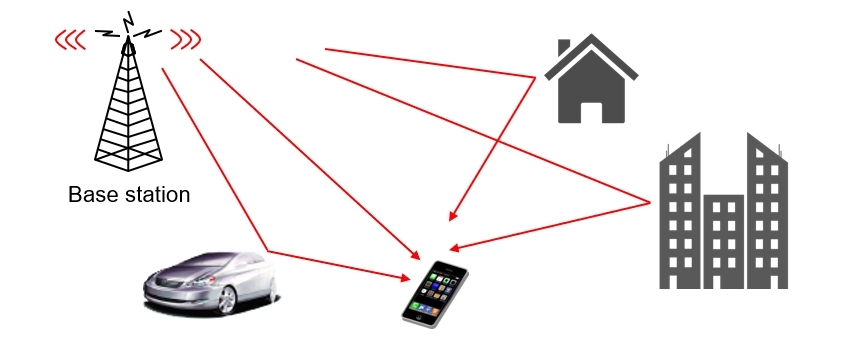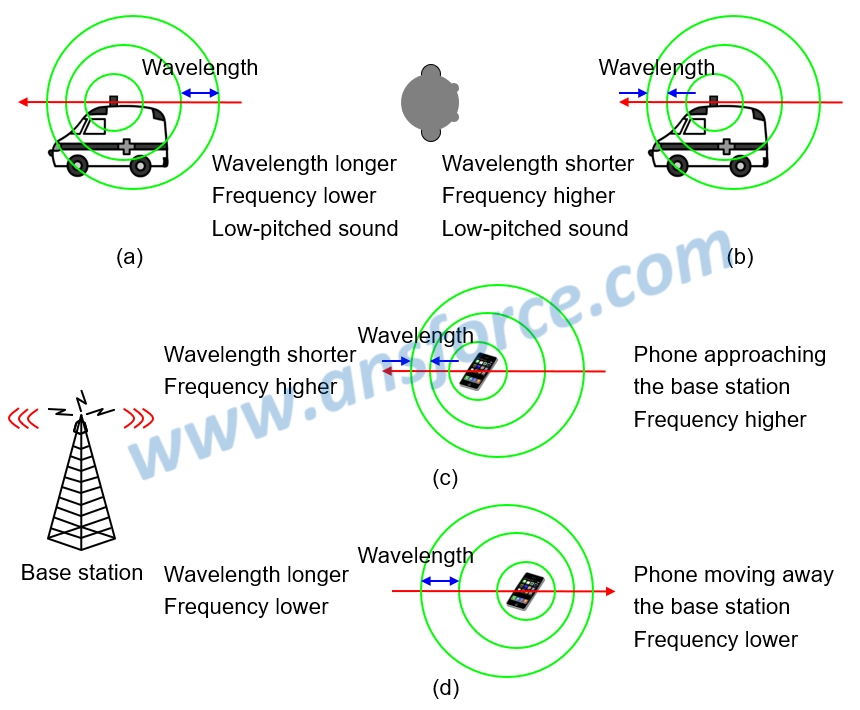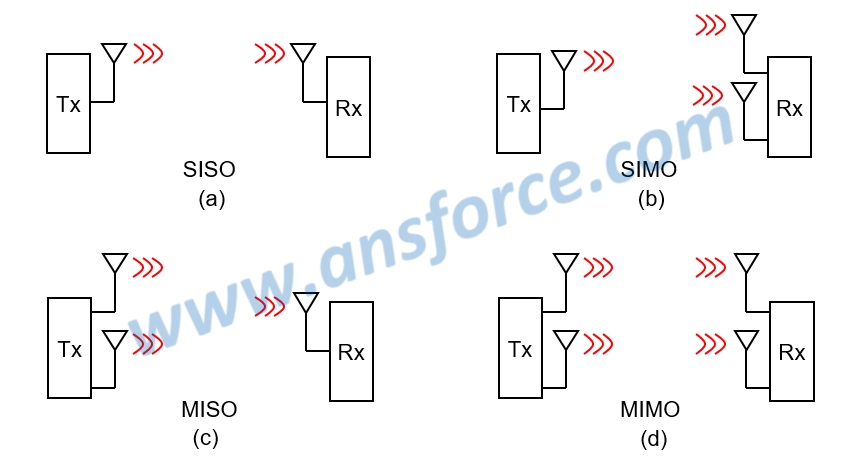文章內容
Wireless Channel and Base Station


❒ Multipath effect
The electromagnetic wave emitted by a base station might be directly transmitted to a cell phone, and might also be transmitted to the cell phone under the effects of attenuation, reflection, refraction, scattering and diffraction generated by passing obstacles, like building or automobile, as shown in Fig. 1. The electromagnetic wave from different paths may not arrive at the cell phone at the same time, and a signal emitted by a base station might become multiple signals via different paths. Because the arrival time, strength and angle for each signal may be different, interference and anarchy of cell phone signal will be induced at the receiver.

Figure 1: Multipath effect.
❒ Doppler shift
When the wave source, such as sound wave, and the observer have a relative motion, the frequency the observer received from the wave source and the frequency emitted by the wave source will be different, which is called “Doppler effect.” We might all have such an experience that when we heard an ambulance rapidly passing by, there will be two situations as follows:
➤ When the ambulance is approaching us: The wavelength of sound wave becomes shorter and the frequency becomes higher. The high frequency sound is a high pitch heard by the ears, so the siren sound will become sharper, as shown in Fig. 2(a).
➤ When the ambulance is leaving away from us: The wavelength of sound wave becomes longer and the frequency becomes lower. The low frequency sound is a low-pitched sound heard by the ears, so the siren sound will become deeper, as shown in Fig. 2(b).
Similarly, although the base station is stationary, the cell phone is mobile. When the wireless communication device (cell phone) emits the electromagnetic wave during moving, the frequency will be changed because the transmitter and the receiver may be closer to each other or be farther away. This is called “Doppler shift.”
➤ When the cell phone is approaching the base station: Because the wavelength of electromagnetic wave becomes shorter, the frequency will become higher, as shown in Fig. 2(c).
➤ When the cell phone is moving away the base station: Because the wavelength of electromagnetic wave becomes longer, the frequency will become lower, as shown in Fig. 2(d).
This kind of frequency change is rather small, and may not have much influence to normal wireless communication, but may have large impact to Orthogonal Frequency Division Multiplexing (OFDM) which is very sensitive to carrier frequency. The 4G (Fourth generation) mobile phone (LTE/LTE-A) just utilizes OFDM technology.

Figure 2: Principle of Doppler shift.
❒ Base station and Antenna
Regarding communication quality for cell phone, we have to talk about the base station that everyone might feel headache while hearing the term. The power of a mobile phone base station is about 40~50dbm(100~100W), so the electromagnetic power around the base station cannot be ignored. According to the telecommunication regulations, a base station should be constructed 15m above the ground and with fences to forbid anybody approaching within six meters range. If the communication equipment for base station is placed on a van, it becomes a mobile base station and the antenna must be deployed during usage. The antenna is a device for transmitting or receiving electromagnetic wave. Theoretically, a long metal stick may be used as an antenna. However, in order to increase the emission power and orientation of electromagnetic wave, commercially an antenna is constructed as a special structure using many metal conductors. According to the emission direction of electromagnetic wave, an antenna may be categorized as “omni-directional antenna” evenly emitting electromagnetic wave toward every direction and “directional antenna” for emitting electromagnetic wave toward a certain direction.
➤ Single-Input Single-Output (SISO): Using one antenna for transmitting signal and one antenna for receiving signal, as shown in Fig. 3(a), such as GSM, GPRS, EDGE of 2G mobile phone.
➤ Multi-Input Multi-Output (MIMO): Using multiple antennas to transmit signals simultaneously and multiple antennas to receive signals simultaneously, which may increase the system throughput and transmission distance without increasing bandwidth or loss of total emission power; i.e. utilizing the space freedom provided by multiple emission antennas and multiple receiving antennas to enhance the spectrum efficiency of wireless communication system and increase data rate and improve communication quality, belonging to a “Spatial multiplexing” technology, as shown in Fig. 3(d), such as HSDPA and HSUPA of 3G mobile phone and LTE and LTE-A of 4G mobile phone.
In the early stage, there are Single-Input Multi-Output (SIMO), as shown in Fig. 3(b), and Multiple-Input Single-Output (MISO), as shown in Fig. 3(c), so-called “Smart antenna.” Furthermore, MIMO may solve the problems of multipath effect and may have better effect in a fully scattering environment. Currently, LTE system of 4G mobile phone may support 2x2MIMO or 4x4MIMO, and LTE-Advanced system may support 4x4MIMO or 8x8MIMO.

Figure 3: Configuration of Base station and Antenna.
【Remark】The aforementioned contents have been appropriately simplified to be suitable for reading by the public, which might be slightly differentiated from the current industry situation. If you are the expert in this field and would like to give your opinions, please contact the writer. If you have any industrial and technical issues, please join the community for further discussion.
